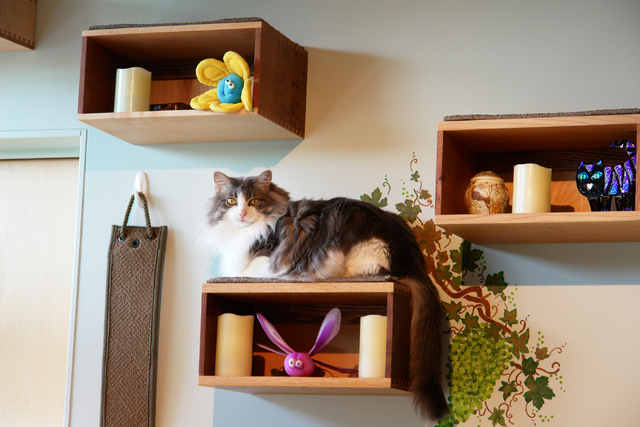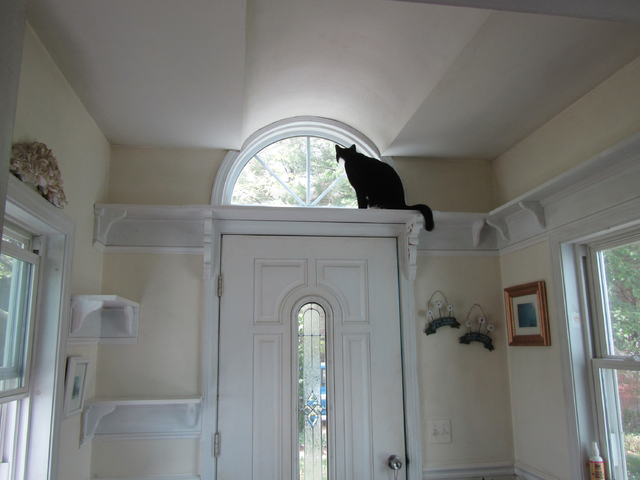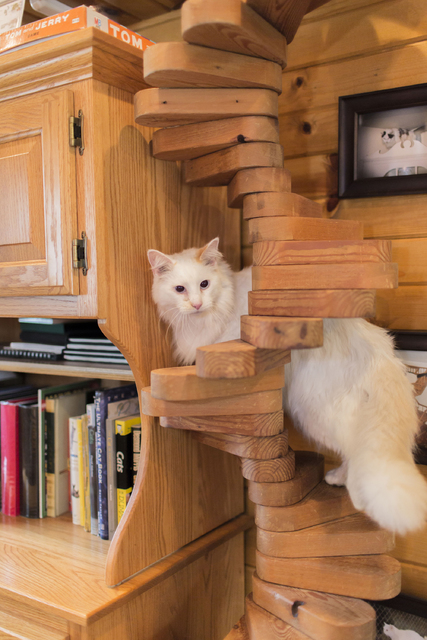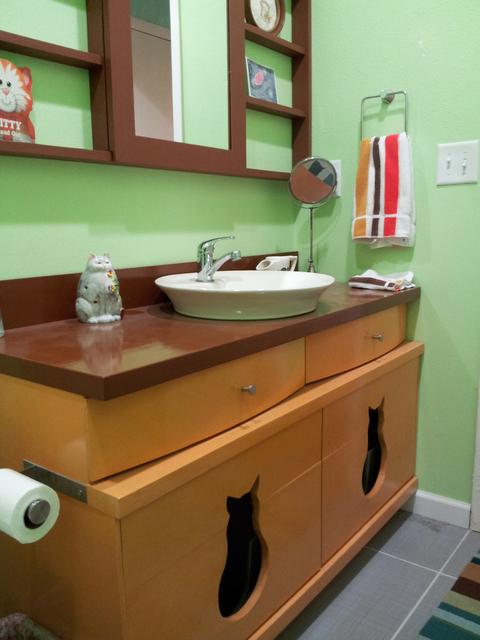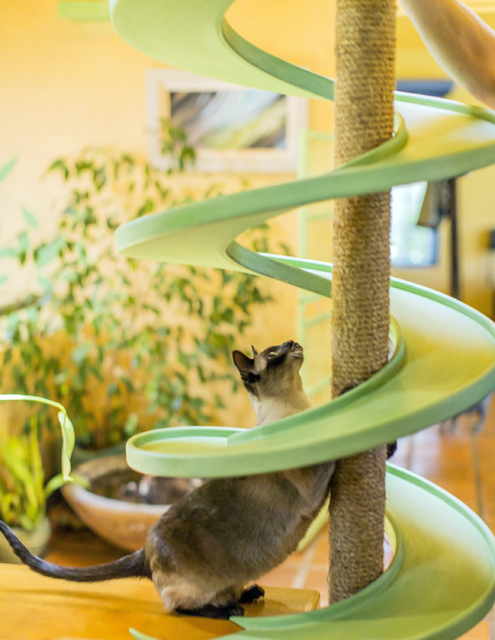NEW YORK — Taking on a cat is one thing. Catifying your home to rise to true Cat Person status is another.
Choosing just the right gear and tweaking your home can keep felines safe, sane and stimulated, said Kate Benjamin, a “cat style expert” who has appeared on Animal Planet’s “My Cat From Hell.”
She has teamed with the show’s host, cat behaviorist Jackson Galaxy, on a new DIY-focused book, “Catify to Satisfy.” It’s a follow-up to their 2014 best-seller, “Catification,” with both offering tips from cat owners on what they’ve accomplished with home enhancements.
Most human-cat relationships can be improved by clearing up one basic misunderstanding, Galaxy said in a recent interview from Los Angeles:
“Cats are not dogs. Cats care not at all about pleasing you. That’s not why they’re here. You have to get your ego out of the way when it comes to having a good relationship with a cat. You have to compromise to live successfully with them.”
Benjamin writes a “Catification” column at JacksonGalaxy.com on cat design and sells a line of her own cat products at her site, Hauspanther.com.
She and her fiance live with 11 cats in a condo of about 1,100 square feet, plus a large enclosed “catio,” in Phoenix. Two more cats live in her design studio.
Some terms and ideas for a cat-friendly home:
Base camp; caving vs. cocooning
Caving is the thing cats do when looking to hide deeply away out of fear. Cocooning is when they go to a movable, semi-enclosed haven to help bring their stress level down.
Benjamin and Galaxy advocate creating a “base camp” for a new cat, meaning a defined room or space where territory can be established. Potential caving areas, such as under a bed or at the top of a closet, should be blocked off.
A cocoon can be anything from a paper bag to a cardboard box to a cat carrier. It should slowly be moved out of base camp as socialization progresses.
“Catification is a lot of DIY,” Benjamin said. “You don’t have to buy anything. You can look at what you already have and do a little rearranging.”
The time it takes to move beyond base camp varies. You should be able to tell when a cat is ready by body language and behavior.
Observe, observe, observe
Before you make changes to your home, understand basic behaviors. Start by simply watching your cat.
“We really do anthropomorphize cats a lot more than we should,” Benjamin said. “You really have to understand their true nature, their instincts and their needs.”
Some basic personality archetypes: the Mojito Cat, who is social, outgoing and confident of her territory; the Wallflower Cat, who lacks such confidence and slinks around on the periphery to avoid confrontation; and the Napoleon Cat, who sprays, bullies and otherwise postures aggressively.
Many cats are a mix of the three.
Scent marking
Marking and claiming territory has everything to do with scent. Cats love to mix their scents with yours.
“People wonder, ‘Why does my cat always come and sit on my sweaters?’ Because it has your scent on it. They ask, ‘Why do they want to be in the bedroom? …’ They want to be in your bedroom because that’s where the scent is strongest,” Benjamin said.
Provide plentiful “scent soakers.” They can be soft toys, beds, blankets, carpeted surfaces and scratchers placed in a cat’s territory to be marked by him. If you’re looking to keep kitty off your sweaters or keyboard, set up a scent-soaked station nearby, such as a no-slip shelf or table top as a perch.
“You want to give them things that are acceptable to scratch and rub on rather than constantly yelling at them for doing those things on objects you don’t want them on,” Benjamin said. “I have a number of perches around my desk.”
Scratchers
Cats like to scratch on different surfaces and at different slants. Try various materials — cardboard, carpet, thick sisal, tighter sisal, wood and cork, for instance — and see what they like. Benjamin discovered that yoga mats are great scratchers. Consider swatches.
Some cats are horizontal, vertical or incline scratchers.
“You have to get in there and really pay attention,” Benjamin said.
One reason your cat likes to scratch your sofa, for example, is to mix your scent with hers. But the sofa might also be made of a deliciously scratchable material. And it’s sturdy as the cat exercises its upper body. That tells you what type of material, incline and environment to provide as an alternative.
Location is everything when it comes to scratchers. If your cat constantly plays with the door jamb in your bedroom, you’d be a fool not to match that slant and place a scratcher nearby.
Superhighways and catios
If you’re now an extreme — or extremely handy — cat owner, you might build one of those mega-climbing routes along a wall. For extra stimulation, build more than one pathway and type of perch. Provide no-slip surfaces and materials that absorb scent. Incorporate boxy hidey-holes, baskets or beds.
In general, cat owners should do more with vertical space, Galaxy said.
“We forget that when cat walks into a room, cat is taking the entire square footage, meaning not just the floor, not just couch level, but the ceiling as well,” he said. “When you add shelving around a room, or when you create a cat superhighway … you’ve just increased that territorial mojo in a way that nothing else can.”
Cat owners with outdoor space can connect an interior superhighway with a catio using tunnels or flaps. Catios can be enclosed with wire mesh and built into existing spaces, such as under an outdoor staircase.
No space? How about Cat TV, meaning the placement of a bird feeder just outside a window.







